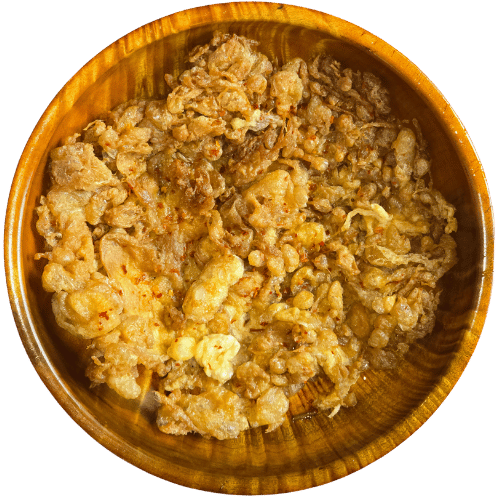Jatsha Gondo is a unique and rare Bhutanese delicacy originating from the village of Nobgang in western Bhutan. This extraordinary egg dish features eggs that are sieved through a fine mesh to create delicate, crispy clusters when deep-fried. The name literally translates to “eggs cooked with a sieve,” describing the unique preparation method where beaten eggs are poured through a sieve into hot oil, forming beautiful long swirls that turn into golden, crispy clusters. This traditional dish is typically prepared during festivals, rituals, and family events, making it a special addition to banquet feasts. The result is a light, crispy egg dish with an intriguing texture that’s both visually stunning and deliciously satisfying.


